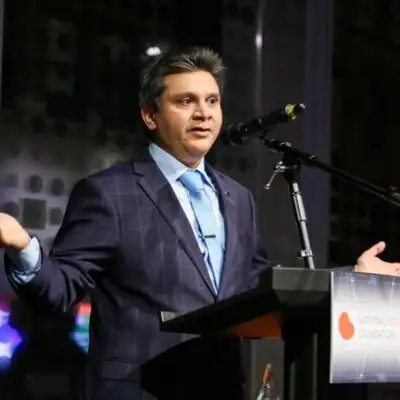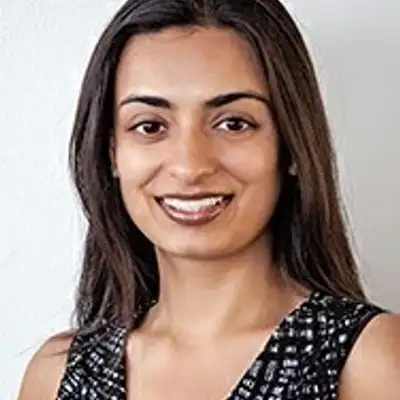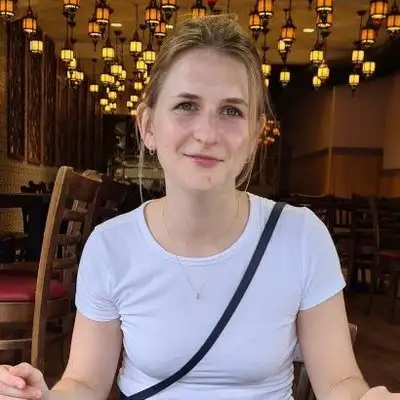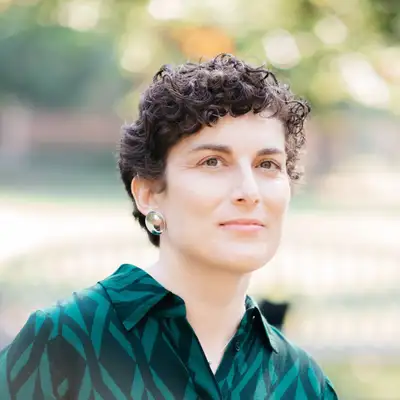Creators and Guests


What is GN in Ten?
A bite-size podcast brought to you by the International Society of Glomerular Disease. Nephrologists and glomerular disease experts Dr. Kenar Jhaveri (Northwell Health/Hofstra University) and Dr. Koyal Jain (UNC Chapel Hill) take a lighthearted look at the latest research, discuss clinical practice, and interview leaders in glomerular medicine — all in a short enough time to listen on your coffee break.
Episode 7: Felicitas Hengel and Nicola Tomas on a New Chapter in Anti-Nephrin Autoantibodies
===
[00:00:00] Laurel Damashek: Welcome to GN in Ten, a bite sized podcast brought to you by the International Society of Glomerular Disease. Our hosts are nephrologists and glomerular disease experts Dr. Kenar Jhaveri of Northwell Health and Hofstra University on Long Island, New York, and Dr. Koyal Jain from the University of North Carolina Chapel Hill.
[00:00:30] Koyal Jain: Welcome everybody. Welcome back to GN in Ten, your bite sized podcast. This is Koyal Jain and Kenar Jhaveri. And we are so excited for this episode today with Drs. Nicola Tomas, also goes by Nick, and Dr. Felicitas Hengel. If you did not hear the other podcast, we recently did one with Astrid Weins on anti-nephrin antibodies, but this is a great way to continue the conversation forward with another amazing article that came out in NEJM a week ago.
We are so excited to have you both, Nick and Felicitas. Do you mind telling our listeners a little bit about yourself?
[00:01:08] Felicitas Hengel: Sure. Thank you very much for having us. I'm Felicitas Hengel. I'm a nephrology fellow and clinician-scientist here at the University Medical Center in Hamburg in the laboratories of Nicola Tomas and Tobias Huber.
[00:01:20] Nicola Tomas: My name is Nicola Tomas. I'm also a clinician-scientist here in Hamburg at the same institution.
[00:01:27] Kenar Jhaveri: Welcome on board and glad to have you on GN in Ten. And as we have looked at the history of anti-nephrin, at least what we know from 2022 from Astrid's paper in JASN, but it looks like Dr. Rennke and Astrid have been seeing this in biopsies for many years.
And finally it's coming to the limelight that this is not as uncommon as we thought. Can you tell us about your study and how this adds to the story of anti-nephrin?
[00:01:55] Felicitas Hengel: Yes, absolutely. And you're absolutely right. Anti-nephrin antibodies have been described since the late 80s. And it was difficult to reproduce and difficult to measure since then, which caused some skepticism in the field. And these difficulties and also the skepticism, I think, were part of why also the discovery met some skepticism since 2022.
And of course, it triggered our interest, our curiosity, and we started to develop a method to reliably detect and quantify anti-nephrin autoantibodies. We measured international cohorts of several different diseases and included plenty of control cohorts or control groups, healthy and also with renal disease.
With this international effort, we could then show that anti-nephrin antibodies were indeed reliably measurable and that they affect around 44 percent of patients with minimal change disease, 9 percent of patients with primary FSGS, and 52 percent of children with idiopathic nephrotic syndrome.
And we also saw that those antibodies correlated with disease activity, in particular the proteinuria. So if we look at only nephrotic patients who did not receive any immunosuppressive treatment, prior to the time of sample collection, the prevalence even rose to 70 percent in adults with minimal change disease and 90 percent in children with idiopathic nephrotic syndrome.
And this itself was already a strong hint at a very important role of those antibodies in the disease. And of course, we wanted to understand that better and developed a mouse model of active immunization with the recombinant murine nephrin. We could induce the formation of autoantibodies in mice which was then closely followed by a massive nephrotic syndrome with the minimal change- like morphology in light microscopy and also in electron microscopy. And we thereby could show a potential pathological, pathogenic mode of action of those autoantibodies targeting nephrin.
[00:04:10] Koyal Jain: This may be just me. I have always felt that podocytopathies, especially minimal change and certain primary FSGSs, are very similar to each other and treatment can be very similar. And of course, we know there's a huge issue with calling FSGS "FSGS," right? And putting everything together.
But I was a little bit disappointed that there were only 9 percent of FSGS patients who had anti-nephrin as compared to 44 percent minimal change disease and in active minimal change disease, I believe you mentioned 69 percent in the paper. Why do you think that's the case? And what are your thoughts?
[00:04:45] Nicola Tomas: Yeah, I can somehow understand your disappointment in a way, but I think this is like what you get if you do a blinded and unbiased analysis, you always get some surprises.
[00:04:59] Kenar Jhaveri: Koyal's always disappointed though.
[00:05:01] Koyal Jain: Okay, honestly, nobody has ever said this because I am literally the least cynical person you'll ever meet.
[00:05:09] Nicola Tomas: so yeah. So I think, what it tells us is probably that anti-nephrin autoantibodies are primarily a feature of minimal change disease. and not so much of primary FSGS. But we can imagine that there are cases somehow progressing or starting with minimal change disease and then progressing to primary focal segmental glomerulosclerosis depending on additional factors that are not anti-nephrin autoantibodies.
So the autoantibodies, they may start the process, but then it comes to genetics. It comes to additional factors. and this somehow transforms from one form to the other. And I think personally, we believe that primary FSGS is still unresolved to a large degree. And we believe that there are maybe other autoantibodies, but also maybe other factors of whatever kind that are more a feature or more specific for primary FSGS.
And they still need to be found, definitely.
[00:06:18] Koyal Jain: I think that this also solidifies the idea that FSGS is too broad a term. I think, yeah, I think if you had, a way to figure out what FSGS really is and divided it up, I think the 9 percent would have been a much higher percentage.
[00:06:32] Nicola Tomas: Probably, totally agree.
[00:06:34] Kenar Jhaveri: If I'm a community nephrologist, and maybe I don't really care about the academia component. And I see minimal change. I give them steroids. What does it matter to me if it's anti-nephrin positive or not? Is it going to change my management?
[00:06:48] Felicitas Hengel: So I think or I hope that it will change management. I think in particular for the children, it will make a change because we now in the future might have a biomarker at hand that we could actually use to diagnose the underlying pathology of the nephrotic syndrome without the need for a biopsy.
Then of course it could also help in the diagnosis during disease course. Most adult patients will nevertheless probably get a biopsy, but in the moment of relapse or if you want to control for therapy response it could still be helpful to have a specific marker of disease rather than just proteinuria which can basically be almost everything that damages podocytes.
So that's for the diagnostic part of anti-nephrin, but of course we also want to change the strategy we have towards those patients in terms of therapy approaches. It would be key to do prospective studies to see if anti-nephrin can tell us anything about the best therapy to use for those patients. They might be particularly well suited for rituximab or even other therapies targeting antibody producing cells, or on the very long run, even to specifically deplete only those cells that actually produce the pathological antibody.
I believe that this will change management in the future, and I think it should somehow, but it's now a bit early to make a prediction how exactly this is going to be.
[00:08:22] Nicola Tomas: At the moment we are still at a stage where we don't even have a certified test that everybody can use. And I think this is really the next step. And if this is available and measurement of these antibodies becomes broader and larger cohorts are being tested, this will allow us to know a lot more about this.
And then of course, in regard to the therapeutic management, we need prospective trials and we need to include patients with and without anti-nephrin antibodies to really know what is the best management for them.
[00:09:00] Felicitas Hengel: Yes.
[00:09:00] Koyal Jain: This whole conversation reminds me of PLA2R, right? That's how it started. First, figuring out PLA2R and then measurement of PLA2R, standardizing the test, and now people are using it to make management changes and decisions. And so I think, to Kenar's point, we might be headed that way. At least I've got my fingers crossed and I'm hoping that we're headed that way.
I hope we can get there.
[00:09:24] Felicitas Hengel: Absolutely.
[00:09:25] Nicola Tomas: Definitely, I hope so too. And I think there's a good chance that anti-nephrin antibodies can become similarly important in diagnostic and management of these podocytopathies in the form of minimal change disease or FSGS. But still, there are also some differences between the dynamics of membranous nephropathy and minimal change disease, in particular how fast the onset is, how chronic the disease is manifesting and so on.
And for PLA2R, we know pretty well that, for example, antibodies appear before the disease becomes clinically apparent, and they disappear before patients go into remission. And this is somehow different from what we observed with anti-nephrin, where this seems to be a very rapid on and off phenomenon.
You have the antibodies, you have the disease. The antibodies are gone, the proteinuria is gone. In regard to this kind of short time prediction that PLA2R is helping us with, this may be different with anti-nephrin. But apart from that, I think there are good chances that this will help us a lot for decisions in the future.
[00:10:38] Koyal Jain: So in terms of transplant is where I was thinking that they could also be helpful and potentially beneficial.
[00:10:45] Felicitas Hengel: One very important aspect where we expect anti-nephrin to become important, because when patients are close to transplant and they're maybe not even produce urine anymore, we cannot really tell if they, if might be nephrotic after transplantation, or if they might recur.
Even though we do not expect too many patients to be anti-nephrin positive, because as Nick explained earlier, we don't think that it's so prevalent in FSGS, it will be extremely important to find the ones who are anti-nephrin mediated because those then could have a particular high risk of relapse.
[00:11:25] Kenar Jhaveri: I just wanted to know how this changes the whole field of pediatric glomerular diseases, especially the idiopathic nephrotic syndrome, because you did have a good amount of patients in your study. There's not many studies that are in pediatric GNs.
[00:11:38] Nicola Tomas: Yeah, I think at this moment, we are still far from an immediate impact of this in regard to management of idiopathic nephrotic syndrome in children. But I think the next step will be to use anti-nephrin antibody measurement as a diagnostic tool for these patients. We all, we don't really want to perform a kidney biopsy on the pediatric patients.
And even though we know that most of them will have something like minimal change disease, it will be great to have a serum marker to make the diagnosis and to monitor these patients.
[00:12:15] Felicitas Hengel: And maybe one more point to this. Of course, we are far from understanding how anti-nephrin antibodies arise, but now that we know them as being one pathological factor, of course, we can look further into how this autoimmunity is caused. And of course, it would be great to have a better and more specific therapy, but the ultimate goal, of course, would be to prevent the formation of those autoantibodies.
We are very far from this, but maybe we open the door towards this path now.
[00:12:48] Koyal Jain: So one of the questions that we have for you is, tell us a little bit about the multicenter collaboration that you had for this study and how can that be maintained going forward?
[00:12:58] Nicola Tomas: Working on this project in a collaborative way and setting up international collaborations was absolutely key for the success of the whole story. You can also see this when you look at the list of authors. These are quite a lot of authors and they are from different parts of the world. From U. S., several sites in Germany, France, Italy, Denmark. So it's really a multi center effort to do this. And I think it has all been brought together by the International Society of Glomerular Disease and we were very happy and very lucky being able to set up these intense collaborations within that short amount of time.
[00:13:42] Koyal Jain: This is great.
So we normally ask our guests what their favorite GN is. And if we call all of this anti-nephrin podocytopathies and we take it off the table what would your favorite GN be?
[00:13:56] Felicitas Hengel: I think then it has to be membranous.
[00:13:59] Nicola Tomas: For me? Yeah, I think that's the right answer. I've been doing research on membranous for the past 12 years, at least. And I think also a lot of the knowledge and a lot of the insights that we gained with membranous nephropathy, they can now become important a second time when we do research with minimal change disease.
[00:14:19] Kenar Jhaveri: This has really been great both of you, I guess the dusting was always on the wall, but we just realized it now after the two studies in Jason and now in NEJM, that it's real and a lot of pathologists have noted this, but now it's really the nephrologists who have to take the next step and recognize.
And order these tests. Before we end, when do you think this could be commercially available for us to order?
[00:14:42] Nicola Tomas: Yeah, so we know that there's a company that is working on this extensively and we from our end, we are, we're doing everything that we can to help them to establish this test. But the timeline, I don't know.
[00:14:57] Felicitas Hengel: We have to keep in mind that measuring those antibodies has always been difficult.
[00:15:02] Kenar Jhaveri: Yeah, it took almost seven years from the discovery of anti PLA2R to actually reach to clinics, at least in the US. So I am assuming that here is a little bit more of a challenge.
[00:15:14] Nicola Tomas: Absolutely. Yeah. I think it will be faster than with PLA2R because of all the experience that has been gained in this field at least we can hope that this will be a little bit faster.
[00:15:25] Koyal Jain: We're all hoping for it.
[00:15:27] Kenar Jhaveri: Yeah both of you are adding to the field of precision nephrology and how we are really discovering antigens and antibodies and hoping towards what oncology has been doing the last decade and when nephrology is heading towards that. Congratulations.
[00:15:42] Koyal Jain: Congratulations. And thank you so much for being with us.
[00:15:45] Laurel Damashek: This has been GN in 10 from the International Society of Glomerular Disease. You can listen and subscribe wherever podcasts are found and tweet at us at ISGDtweets. Thank you for joining us.
[00:16:01] Koyal Jain: No, you're good. I thought Kenar was going to say something. I didn't want to interrupt him again. And
[00:16:07] Kenar Jhaveri: No, we just like to interrupt each other. It's okay.
[00:16:11] Koyal Jain: That's all we do.
[00:16:12] Kenar Jhaveri: I mean, Koyal always likes to have the last word.


